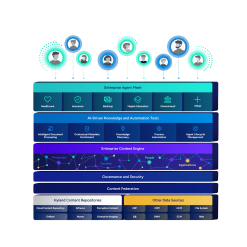What can you do with Hyland IDP?
Hyland's AI-powered intelligent document processing solution brings instant value and efficiency to teams that work with document capture, classification, extraction and validation.

Harness the power of a unified content, process and application intelligence platform to unlock the value of enterprise content.
Learn more
Automate your document-centric processes with AI-powered document capture, separation, classification, extraction and enrichment.
Learn about Hyland IDPIt's your unique digital evolution … but you don't have to face it alone. We understand the landscape of your industry and the unique needs of the people you serve.
 Overview of industries
Overview of industries
Countless teams and departments have transformed the way they work in accounting, HR, legal and more with Hyland solutions.
 Overview of departments
Overview of departments
We are committed to helping you maximize your technology investment so you can best serve your customers.
 Overview of services
Overview of services

Discover why Hyland is trusted by thousands of organizations worldwide.
Hear from our customers
Our exclusive partner programs combine our strengths with yours to create better experiences through content services.
Overview of partners
Join The Shift newsletter for the latest strategies and expert tips from industry leaders. Discover actionable steps to stay innovative.
Register now
Hyland connects your content and systems so you can forge stronger connections with the people who matter most.
Learn about HylandWith our modern, open and cloud-native platforms, you can build strong connections and keep evolving.
 Dig deeper
Dig deeper

The digital world is transforming rapidly. Stay up to date with insights on how today’s most advanced technologies can enhance what matters most: Your human connections.

A Hyland-commissioned Forrester Consulting study uncovered insights and recommendations for content management decision-makers. Discover the latest in market trends as AI, cloud and intelligent automation gain momentum and effectiveness.

The use of AI in process automation will disrupt workplaces — just make sure your organization is leading.

Forrester research shows that employees who are equipped with the right digital tools are more likely to be highly engaged.

Hyland's AI-powered intelligent document processing solution brings instant value and efficiency to teams that work with document capture, classification, extraction and validation.

Gain a cloud-native digital transformation strategy dedicated to better customer service — and smarter, stronger, faster growth. With Hyland, you can reach your full potential.

Explore how IDP is helping businesses across various industries transform their operations for enhanced efficiency.

Maximize your content services investment, prioritize information security and prepare for what’s next with this one move.
We have received your message and will be in contact shortly.
We have received your message and will be in contact shortly.
